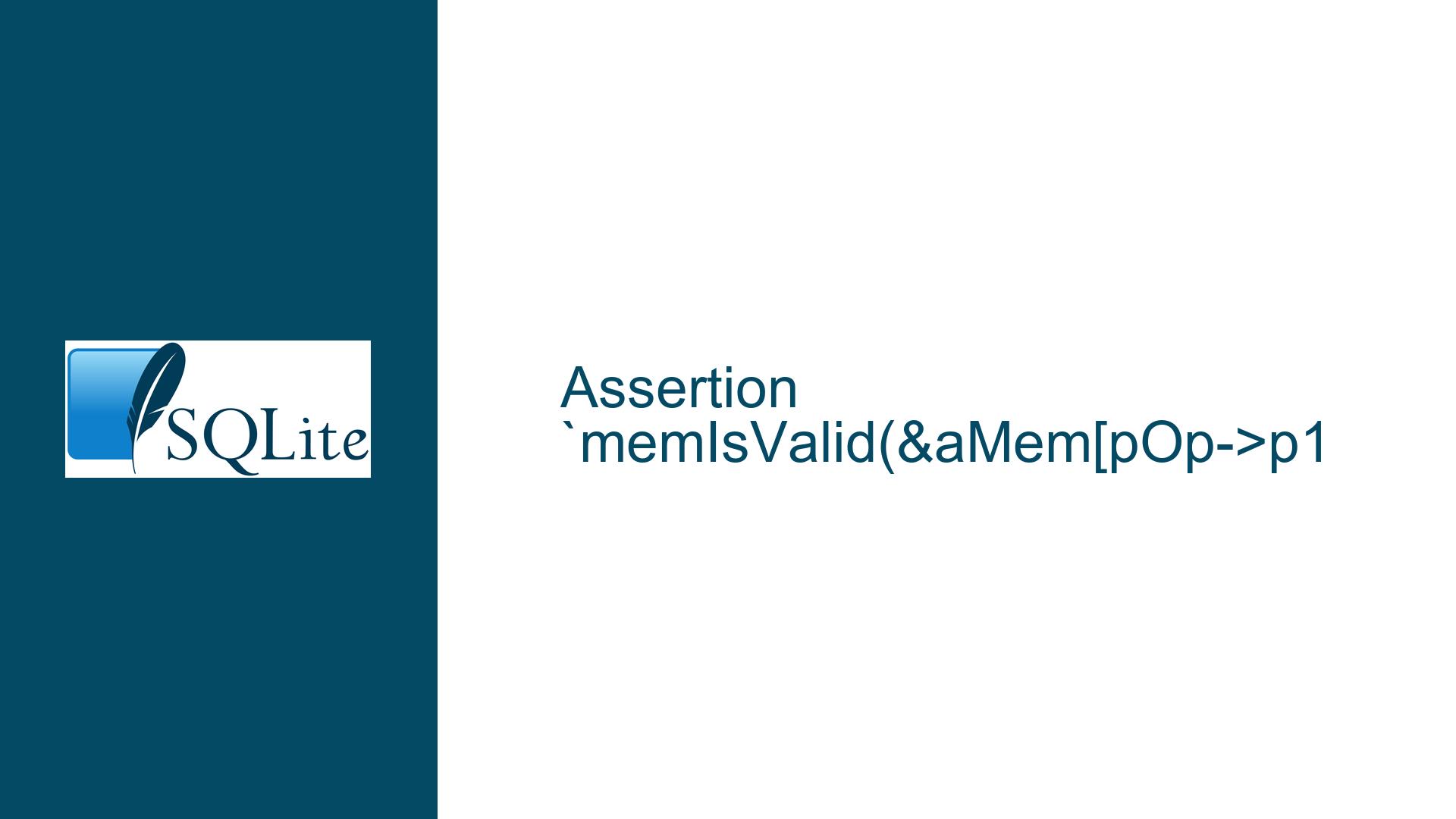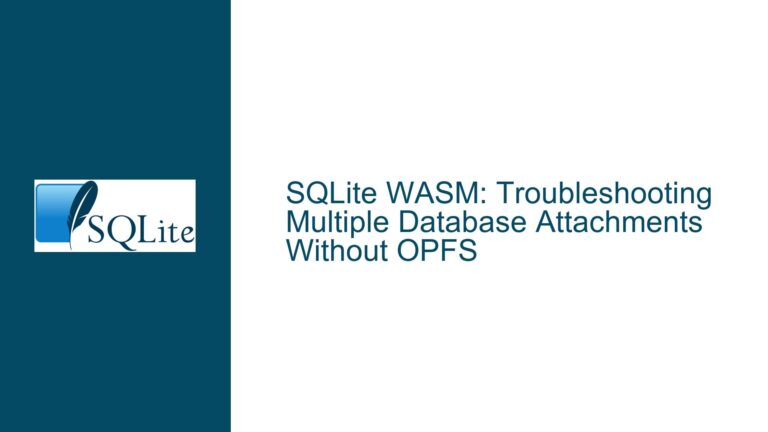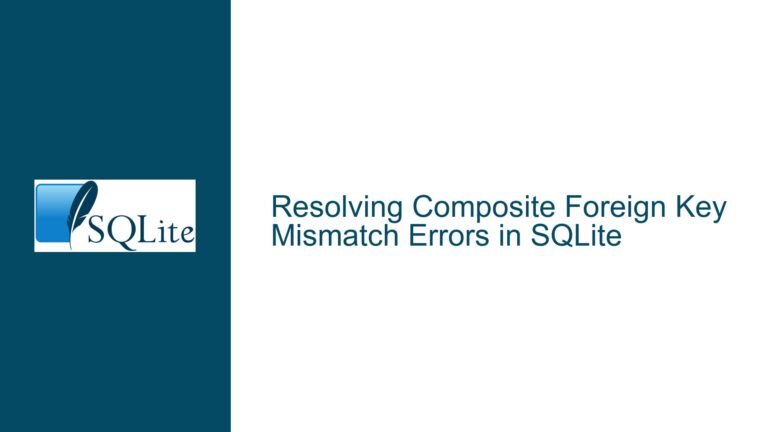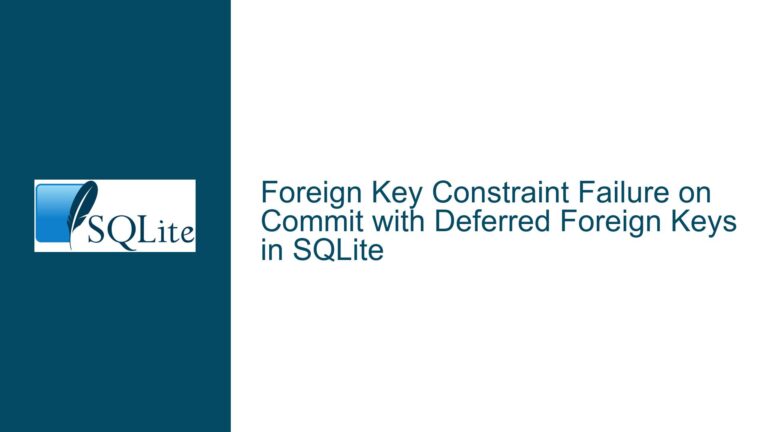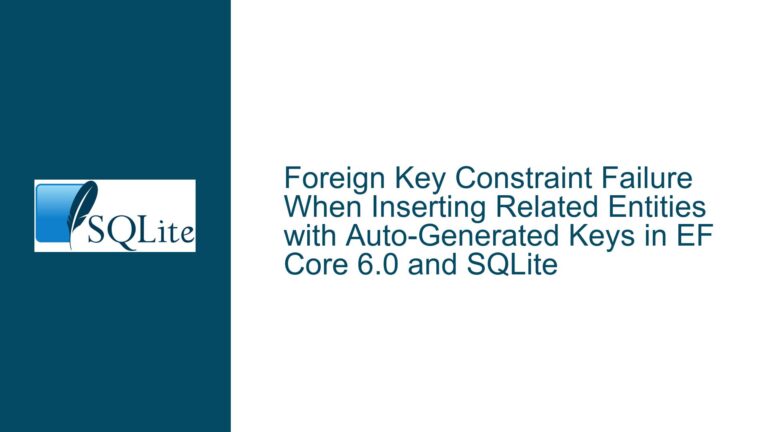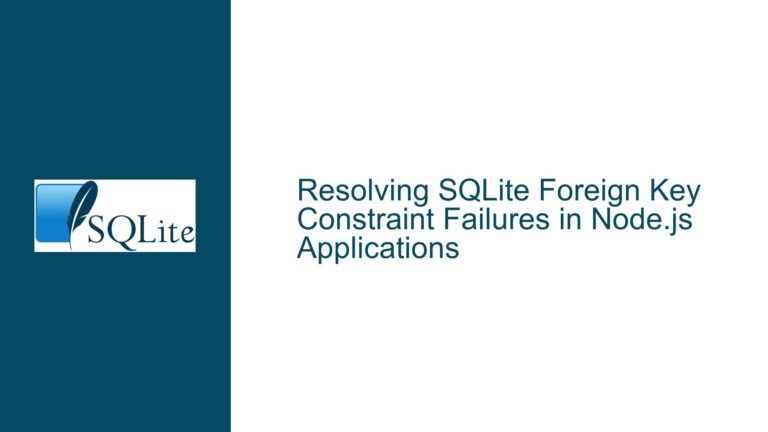Assertion `memIsValid(&aMem[pOp->p1
Issue Overview: Foreign Key Cascade Trigger Cache Invalidation Failure
The core issue revolves around a long-standing bug in SQLite’s handling of foreign key constraints, specifically those involving cascading deletes. The bug manifests when a table referenced by a foreign key constraint is dropped and recreated with a different schema. The cached virtual trigger responsible for enforcing the cascading delete operation becomes invalid, leading to an assertion failure in the SQLite virtual machine (VM) during query execution. The assertion memIsValid(&aMem[pOp->p1])' failed indicates that the VM attempted to access an invalid memory location or an improperly initialized value, which is a direct consequence of the stale trigger cache.
The problem is deeply rooted in SQLite’s schema management system. When a table is dropped and recreated, SQLite does not automatically invalidate or refresh the cached virtual triggers associated with foreign key constraints. These triggers are generated at the time of table creation and are stored in the schema definition. However, when the referenced table’s schema changes, the cached triggers are no longer valid because they reference columns or structures that no longer exist or have been altered. This discrepancy causes the VM to encounter an invalid memory reference during query execution, triggering the assertion failure.
The issue is particularly insidious because it does not manifest immediately. The assertion failure occurs only when the cascading delete operation is attempted, which might happen long after the schema change. This delayed failure makes debugging and diagnosing the issue challenging, as the root cause (the schema change) and the symptom (the assertion failure) are temporally separated.
Possible Causes: Schema Change Without Trigger Cache Invalidation
The primary cause of the assertion failure is the lack of cache invalidation for virtual triggers associated with foreign key constraints when a referenced table undergoes a schema change. This issue can be broken down into several contributing factors:
Virtual Trigger Caching Mechanism: SQLite generates virtual triggers to enforce foreign key constraints, such as cascading deletes. These triggers are cached in the schema definition for efficiency. However, the caching mechanism does not account for changes to the referenced table’s schema. When the referenced table is dropped and recreated, the cached triggers remain unchanged, leading to inconsistencies.
Schema Change Handling: SQLite’s schema change handling logic does not include a step to invalidate or refresh cached virtual triggers. When a table is dropped and recreated, the schema version is incremented, but this does not trigger a refresh of the cached triggers. As a result, the cached triggers continue to reference the old schema, leading to invalid memory references during query execution.
Delayed Failure: The assertion failure does not occur immediately after the schema change. Instead, it occurs when the cascading delete operation is attempted. This delayed failure makes it difficult to trace the issue back to the schema change, as the two events are separated in time.
Foreign Key Constraint Definition: The issue is specific to foreign key constraints that involve cascading deletes. The virtual trigger generated for the cascading delete operation is the one that becomes invalid when the referenced table’s schema changes. Other types of foreign key constraints, such as those with "ON UPDATE CASCADE," may also be affected, but the discussion focuses on the "ON DELETE CASCADE" scenario.
Debug Builds and Assertions: The issue is more likely to be caught in debug builds of SQLite, where assertions are enabled. In release builds, the invalid memory reference might go unnoticed, leading to undefined behavior or crashes. This makes the issue particularly problematic for developers who rely on debug builds for testing and validation.
Troubleshooting Steps, Solutions & Fixes: Resolving Trigger Cache Invalidation
To address the assertion failure caused by the stale trigger cache, the following troubleshooting steps, solutions, and fixes can be applied:
Schema Change Detection and Cache Invalidation: The most effective solution is to modify SQLite’s schema change handling logic to detect when a referenced table is dropped and recreated. When such a change is detected, the cached virtual triggers associated with foreign key constraints should be invalidated or refreshed. This ensures that the triggers always reference the current schema, preventing invalid memory references.
Manual Cache Invalidation: In cases where modifying SQLite’s source code is not feasible, a workaround is to manually invalidate the cached triggers after a schema change. This can be done by executing a
PRAGMA schema_versioncommand, which increments the schema version and forces SQLite to refresh its internal caches. However, this workaround is not foolproof and may not cover all scenarios.Avoiding Schema Changes: Another workaround is to avoid dropping and recreating tables that are referenced by foreign key constraints. Instead, consider using
ALTER TABLEstatements to modify the table schema. This approach minimizes the risk of triggering the assertion failure, as the table’s schema is not completely recreated.Testing and Validation: Developers should thoroughly test their applications, especially in debug builds, to catch any assertion failures related to foreign key constraints. This includes testing scenarios where referenced tables are dropped and recreated, and cascading delete operations are performed. Early detection of the issue can help prevent it from manifesting in production environments.
Updating SQLite: The issue has been fixed in the latest version of SQLite. Developers should update their SQLite libraries to the latest version to benefit from the fix. The fix involves resetting the cache of triggers used for cascading deletes and updates after every schema change, ensuring that the triggers always reference the current schema.
Custom Trigger Management: For advanced users, custom trigger management can be implemented to handle foreign key constraints. This involves creating and managing triggers manually, rather than relying on SQLite’s virtual triggers. While this approach provides greater control, it also increases complexity and requires careful management to ensure consistency.
Monitoring and Logging: Implementing monitoring and logging mechanisms can help detect and diagnose issues related to foreign key constraints. By logging schema changes and trigger invocations, developers can identify patterns that lead to assertion failures and take corrective action.
Code Review and Best Practices: Regular code reviews and adherence to best practices can help prevent issues related to foreign key constraints. This includes reviewing schema changes, ensuring proper use of foreign key constraints, and validating cascading delete operations.
In conclusion, the assertion failure caused by the stale trigger cache in SQLite’s foreign key cascade mechanism is a complex issue that requires careful attention to schema management and trigger caching. By understanding the root cause and applying the appropriate troubleshooting steps and solutions, developers can prevent the issue from occurring and ensure the stability and reliability of their applications.
